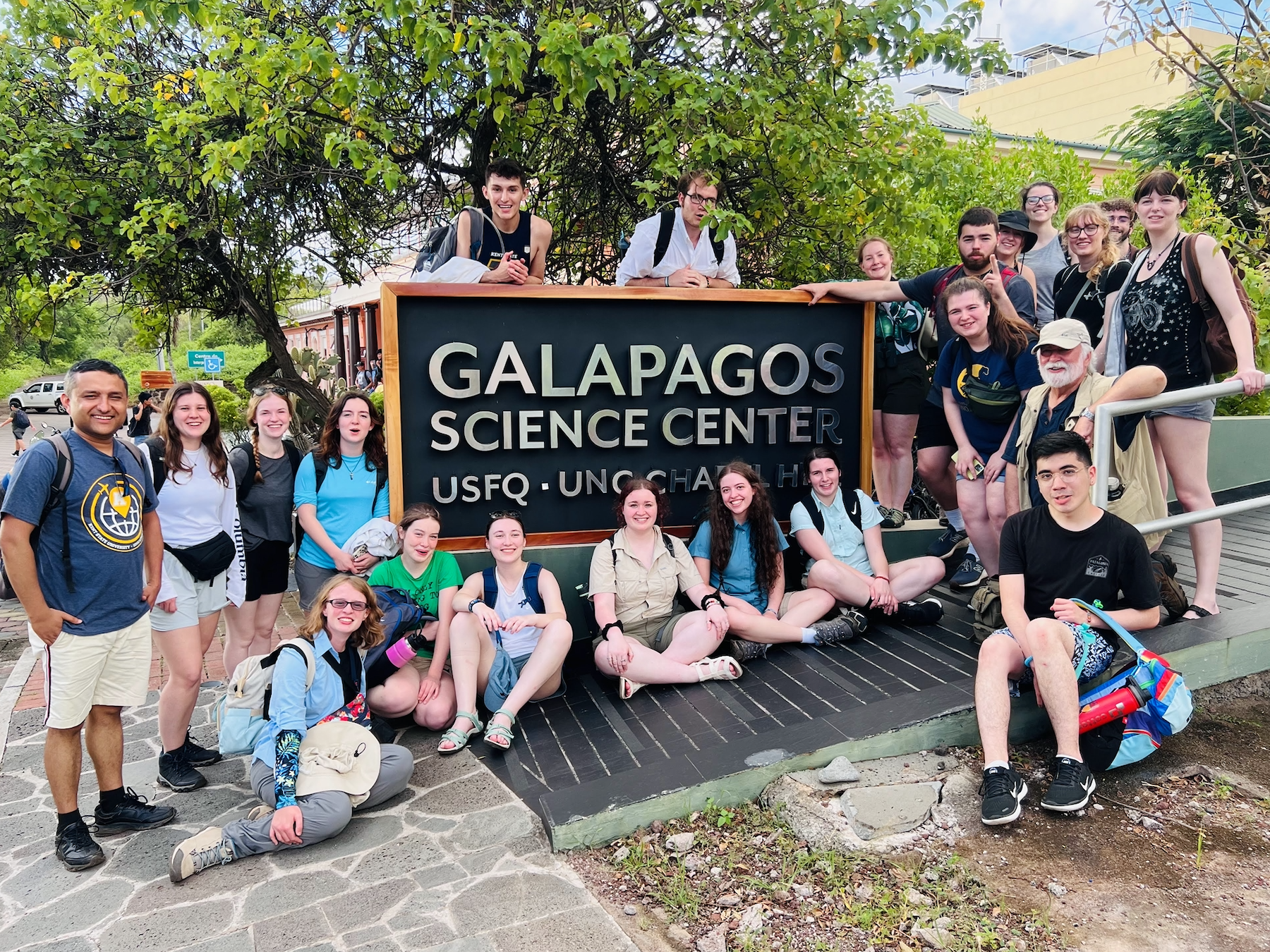
A new study led by a єЪБПНш Biological Sciences professor has uncovered how the avian vampire fly (Philornis downsi) has successfully invaded the GalГЎpagos Islands, threatening the region’s unique bird species.
Published in the journal Molecular Biology and Evolution, the is the first to analyze the whole genome of P. downsi populations from the Galápagos Islands and mainland Ecuador. The findings highlight the importance of genomic research in understanding biological invasions and offer ways to protect Galápagos’ unique biodiversity.
Invasive species like P. downsi often lead to declines in native species. The avian vampire fly, an introduced parasite, has devastated populations of Darwin’s finches and other native birds in the Galápagos Islands by feeding on their nestlings. Despite its ecological impact, until now, the genetic reasons behind its invasion success were unknown.
To investigate these genetic mechanisms, Sangeet Lamichhaney, Ph.D., assistant professor of biological sciences at Kent State, conducted whole-genome sequencing of 53 individual P. downsi flies from six islands in GalГЎpagos and 13 individual flies from two different locations in mainland Ecuador, followed by a comprehensive population genomics study.

The researchers found that the GalГЎpagos populations had less genetic diversity compared to the mainland populations. Despite this, the island populations showed ongoing gene flow and adaptive genetic changes that may have contributed to their establishment and spread.
“We found gene flow among fly populations on islands that are popular tourist destinations, such as Santa Cruz and Isabela, whereas no gene flow was detected in islands like Marchena, which receive little human activity,” Lamichhaney said. “This finding highlights how human movement may have facilitated the spread of P. downsi across the archipelago, emphasizing the role of human activities in shaping invasion dynamics.”
The researchers identified specific parts of the P. downsi genome that are under positive selection, particularly near genes related to neural signaling, muscle development and metabolic processes.
“These genetic adaptations likely enabled the fly to thrive in its new environment, even in the face of initial genetic constraints,” Lamichhaney explained.
Additionally, the study identified genetic changes linked to precipitation-related climate adaptation, indicating that environmental factors have influenced the fly’s invasion in Galápagos. Together, these findings offer critical insights into how invasive species overcome genetic challenges to establish and persist in novel ecosystems.
“This study highlights the power of genomic research in understanding biological invasions and underscores the urgent need for conservation strategies to mitigate the impact of P. downsi on Galápagos biodiversity,” Lamichhaney said.
Aarati Basnet, a graduate student in Lamichhaney’s lab and the first author of the study, believes that understanding these genetic mechanisms is key to developing better conservation strategies.
“Despite the reduced genetic diversity in P. downsi populations in Galápagos, our study demonstrates how rapid genetic adaptations can compensate for these limitations, allowing invasive species to persist and thrive in new environments,” Basnet said.
These findings contribute to the growing field of invasion genomics and reinforce the need for proactive management strategies to protect island ecosystems.
“Understanding the genetic basis of invasion success provides valuable insights into how other invasive species, in particular invasive parasites, might adapt to novel environments,” said Jennifer Koop, Ph.D., associate professor at Northern Illinois University and a senior collaborator on the study.

Charlotte Causton, Ph.D., a lead scientist at the Charles Darwin Foundation in GalГЎpagos investigating methods to control P. downsi, and a senior collaborator on the study, said this study provides a crucial genetic foundation for understanding how P. downsi has adapted to GalГЎpagos.
“By identifying the role of gene flow and human activity in its spread, we can better target control measures to mitigate its impact on native bird species,” Causton said.
For more information about Kent State's Department of Biological Sciences, visit www.kent.edu/biology.
# # #
Media Contact:
Sangeet Lamichhaney, slamichh@kent.edu, 330-593-9801


